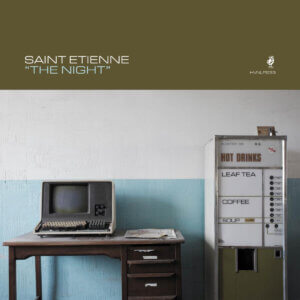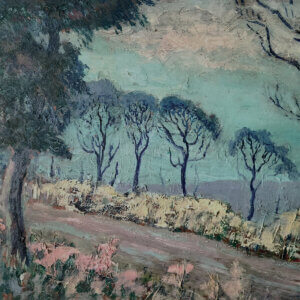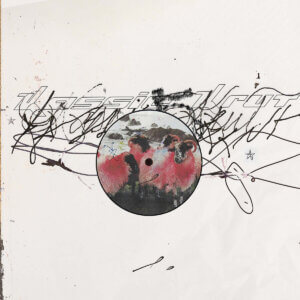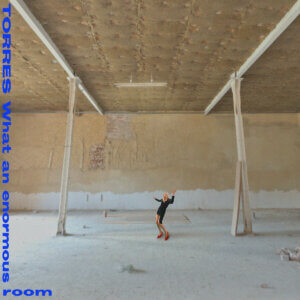Patrick Stickles explains ‘The Most Lamentable Tragedy’
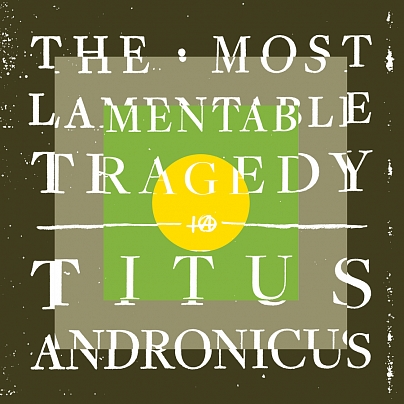
When Patrick Stickles picks up the phone to talk to me about the new Titus Andronicus album, he is very prepared. “I’m so ready for you,” he says. “I’ve been thinking all about it.” When he says this, I laugh, mainly because it sounds like he is at least being a little bit facetious, although I definitely know he cares a great deal about The Most Lamentable Tragedy, the band’s massive 93-minute rock opera that comes out July 27. Well he has been thinking about it, and he’s got a lot to say. So much in fact, that our interview wasn’t so much a Q&A, but a full-on manifesto of the project. While I gave my two cents about the record here and there as he went along, I found it was more important to sit back and let the artist speak. This record covers a LOT. Mental illness, depression, natural highs, love, time travel, seasonal affective disorder, our own ancestral lineage, and self discovery through split personality. The Most Lamentable Tragedy makes The Monitor, the band’s 2012 magnum opus relating the civil war to the trials and tribulations of growing up in suburban New Jersey, seem like a light pocket novel.
There is plenty to enjoy about The Most Lamentable Tragedy without knowing or understanding the story, but getting a clue in will greatly enhance getting lost in the record. For starters though, there is this video that illustrates the rising action of the record’s second act, but even that might be confusing for anyone outside of the band. It’s the story of Our Hero and his Lookalike (both personas of Stickles), and their collective journey in and out of darkness — an allegory for personality disorder and the ups and downs of manic depression. We present to you now, the unfiltered explanation of the story’s ambitious five acts. Listen to the album and read along if you like.
Patrick Stickles:
I sort of realized That I had been leading a double life, as a manic depressive. Certain times I have a lot of energy and enthusiasm, and these are the times when I do things like write songs, give thrilling performance, dazzle journalists with my eloquent[cy]. And then there’s other times when I’m dead inside, lack energy, am lethargic, depressed, filled with ennui and anxiety, feeling malaise. [The record] is an illustration of my mood cycle.
Each act has a different season it’s associated with. Five acts. Through the seasons. Two winters.
Act 1
The first act is about being depressed. It’s winter. Everything is dead. Everything is bleak, empty, and blank. But malignantly blank. So blank that all you see is the absence of light. So Our Hero lives alone in the 100 square foot cubicle. And basically that’s the whole story of the act, he basically just sits around breathing. It’s the way that I’ve spent way too much of my life.[I] let a lot of good years slip away staring at the walls of a cubicle, when I wasn’t staring at Frasier.
So basically that’s just a time of disempowerment, as such, and even though this is a rock opera, you might notice that the instrumentation and the arrangements of the songs in this act are not terribly fancy. They’re kind of more in line with the arrangements on Local Business. So this more spartan, more withholding approach to arrangements is meant to reflect the disempowered mind space of the main character. He feels so disempowered, that he doesn’t have the ability to see the world for the technicolor fantasia that it may be. In his reality, there are no violins, horns, or glockenspiel. Only fucking brutality and lean guitars. So even though this is a rock opera, and there are plenty of moments on the album that are done up big time, we also wanted to continue to explore recordings that are live, recordings with just one vocal track instead of 20, two guitars instead of 30. But we were able to take that aesthetic and say, “What is the equivalent of that in the narrative? How do we make this structure reflect the action of this story?” Because in the greatest art, every little element, even if it’s a big tapestry of ideas, every element is pointed in one direction at one time, for one particular emotional experience that the artist is trying to curate for the listener.
Act 2
Our Hero is entering a heightened reality of hypo-mania. When you first become a maniac, everything seems wonderful. It’s like you’ve been miraculously rescued. That’s why he wakes up on this magic morning, and he’s ready and he just goes for it. That’s the spring time. The bloom is on the rose, everything is turning green, birds singing and stuff. The second act is more like the transformative, transitional experience because the main character meets the Lookalike. The Lookalike states his case about why he lives the way he does, and why Our Hero should as well. And then Our Hero goes into this drug-induced past life hallucination, this past life regression, that’s on “More Perfect Union,” that’s the long more Irish-sounding one. Where Our Hero adopts the avatar of his own ancestor. His ancestor has emigrated to America from the old country. That decision to move to a new country becomes the metaphor for our main character leaving behind his old depressed, defeated view of life, and develop a more Lookalike-ish, give-me-everything-all-the-time attitude about life.
None of this story is exactly realistic. They may have possibly all been a dream. There may not actually be another guy, but basically you’re not meant to be certain of what is real and what isn’t real, because when all this shit happened to me, I didn’t know what was real, and I’m still not 100% certain. But that’s fine for the Lookalike. The Lookalike is like a magical spirit. It’s kind of understood that he’s not a regular joe off the street. It’s more of what [Frederich] Nietzsche would call an ubermensch, from which we derive our english word, “superman.”
Act 3
But then when we come into real life again…the third act and the first act. They take place in the same reality. Things are different in the third act with the production, just because our character is more empowered. But he’s basically running around in the same neighborhood where the 100-square foot cubicle is, but now he is infused with this new energy and empowerment that he took away from his encounter with the Lookalike. But that encounter happened in a Garden of Eden-type scenario, and trying to actually do that and apply that in real life creates problems and that’s why it gets more brutal and heavy-freaky in the third act.
What makes it more complicated is that Our Hero comes to a more of an understanding of himself, but he also makes the decision that “not only do I accept this thing within myself, I want to tell somebody else about. I want to show this woman that I like about this fatal flaw that I’ve got. I’ve validated myself and I’m ready to express myself and share.”
Act 4
The fourth act is another dream. He again takes on the avatar of the ancestor. But this time the ancestor has made it to America. He’s on the other side of his journey, just like Our Hero is in the so-called “real world.” Basically the ancestor in the fourth act takes on the action of the story and doesn’t stop. We’re to understand that what happens to the ancestor in the dream, is happening in the chronology of the story around that same time to our main character. So in the previous dream sequence, when our ancestor made the decision to leave the old world behind and start a new life, we understand that our main character made that decision too. So in this second dream sequence, everything that happens to the ancestor, (his little love story is getting resolved), and we’re to understand that is a reflection and representation of whatever happens with the love story that our main character is involved in present day reality.
So basically, the ancestor is in America now, New York City. It’s New Year’s Eve, 1910 or 1911. They all made it over from Ireland, they’re all at the public house for a New Year’s celebration. Basically what happens is, that song, “Come On, Siobhán” — our ancestor basically does the same presentation he does for this love interest, that the Lookalike had given Our Hero in the second act. This fourth act is like a mirror image of the second act, in the same way that the fifth act is like a mirror image of the first act. All these events rotate around the center act in summer time. So the ancestor says to the love interest, just as the Lookalike said to Our Hero, “Don’t be afraid, the world is wide open, there’s all these possibilities. You can do anything…” It sounds great, and the love interest actually does go for it, but at midnight, as luck would have it, the ancestor, Our Hero, the maniac, hits the wall at the least opportune time, and is again betrayed by his own nature that he thought he was superior to.
So at the tolling of the bell, he loses it, and we don’t exactly knows what happens. He goes insane, and loses his ability to communicate. The tolling of a horrible bell, a fucking major chord turns into a minor chord, and then slips downward. That one doesn’t have it’s own season because it’s a dream that happens in summer time, but it’s also New Year’s Eve. One of the morals of the story is that as a so-called mentally ill person, the way I feel is okay. I’m not a freak or anything. I have a hard time sometimes, but I am normal, I am just the way I’m meant to be. That’s super important, but Our Hero gets in a lot of trouble because he wants to go on a wild ride in his life and that’s fine. But what’s not fine is bringing an innocent person along with him on that ride, hurting them and then traumatizing them in the process, as mentally ill people will often do to their loved ones.
While Our Hero is saying to the love interest, “There’s so much stuff we could do,” he’s also saying like, “Take my bullshit and make it your bullshit,” and that’s not okay. It’s not anybody else’s fault that you’re the way that you are. You can’t make that anyone else’s problem, and your own suffering is definitely an excuse to exacerbate the suffering of somebody else.
Act 5
The fifth act starts with “The Fall.” Basically the season is autumn, the life that once was there is dying and decaying before your eyes. All of the possibilities have turned into the inevitable fatality. The impermanence of all things, including yourself, is made explicit all around you. Our Hero wakes up after an inordinate length of time. The previous season was the summer but also, remember there was a winter in there. Act 4 happened in the winter, even though it was summer. So the implication is that when Our Hero went to sleep, and slept through that autumn, that winter, that spring, and that next summer. Slept for a whole year and woke up in the next autumn, and remembered what had happened. That he had this love interest, that he has this doppleganger, and that it’s all gone to shit.
Basically this one of the vaguest acts in terms of the plot which is why I really got to get going on making another movie. But basically what happens is that Our Hero discovers a trap door under the mattress in his cubicle and finds a series of underground tunnels and we find out it’s the same tunnel into which Our Hero went exploring when he was a little kid on the song “I’ve Lost My Mind.” Because like I said, these acts exist together among a certain orbit, so the first act and the fifth act are connected to each other. So they’re rocking out with that song “Filler,” It’s where Our Hero is gearing up one last time to really take a stand and confront whatever it is that’s going on. So what happens is that he fights this monster that tormented him the first act, and then of course it’s revealed that underneath the cloak was the Lookalike all along. It turns out that he was the one who tortured Our Hero.
On the song “Stranded,” we talk about this mystery beast…that was a real character, that wasn’t exactly a metaphor. Or maybe it was, I mean it’s all really a metaphor. But anyway, this is a real character who is confronted on the end of the song “Filler.” So they have a fight, Our Hero wins, and unmasks this monster, and it’s the Lookalike. The same guy who sang “Fired Up” and “Dimed Out,” and who set Our Hero out on this whole journey. So he confesses — it’s kind of like a Darth Vader/Luke Skywalker kind of Return of the Jedi moment. You take off the mask and it’s this frail, beaten guy. And you’ll notice that there’s no drums or any guitar in that song (“No Future Part V”), and in fact drums and guitar will not reappear for the rest of the album, because that’s a representation of his empowerment, and he’s being left with nothing. Every little piece of strength is disappearing.
And then after that, “Stable Boy,” the finale of the album, that’s the most disempowered. I recorded that on a cassette tape recorder and chord organ, and the implication there at that level of disempowerment is, everything you’ve seen before that song was like a play. And I am an actor, and I played Our Hero and the Lookalike and it all happened on a stage. The implication with this crudely recorded track, wrapping up the rock opera, the implication is that we’re made to understand that this isn’t even part of the play. This is more of a found object. This is Our Hero learning to express himself for the first time and articulate his experience for the first time. He accepts and validates himself. This is how I’m supposed to be.
By: Doug Bleggi
Latest Reviews
Tracks
Advertisement
Looking for something new to listen to?
Sign up to our all-new newsletter for top-notch reviews, news, videos and playlists.
